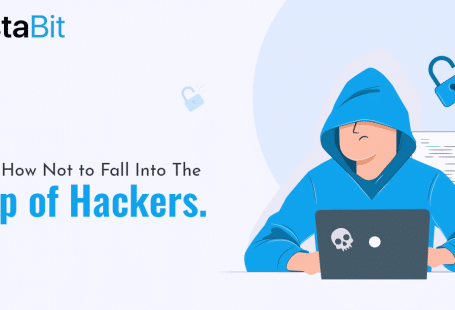Let’s start this write-up in an old school way. Here’s what Wikipedia says about Crowdfunding.
“Crowdfunding is the practice of funding a project or venture by raising many small amounts of money from a large number of people, typically via the Internet. Crowdfunding is a form of crowdsourcing and of alternative finance.”
You can raise funds for a cause that you care about, or to finance a business, or to develop a prototype, or to validate an idea. Through crowdfunding, you can discover how much-invested people are in your idea.
If you peek into history, you will realize that Crowdfunding has pretty old roots. There is an interesting story behind The Statue of Liberty. The plinth on which the lady stands was crowdfunded. A newspaper made a public appeal to donate for the plinth.
The concept of Crowdfunding was made mainstream by platforms like Kickstarter and Indiegogo in 2009. These two have turned out to be the largest crowdfunding platforms (reward-based).
Primarily, there are four crowdfunding models, namely donation, reward, equity, and debt. In this write-up, we will be focusing on donation and reward-based crowdfunding, and we will take up the remaining two in subsequent write-ups.
Donation-Based
This model is based on compassionate grounds, where people create a landing page for a cause, share the URL with their family, friends, colleagues, and social media contacts, and ask for a donation.
JustGiving, which is a popular platform in the UK, accommodates this model of crowdfunding. Kickstarter also gives space to compassionate projects run by individuals. Indiegogo, on the other hand, is no more associated with this particular model.
There are platforms that operate within specific countries or cater to specific sectors. Like for example, in the UK crowdfunding platforms usually caters to scientific research, archaeological excavations, or local community projects.
These platforms are nothing but marketplaces, where project owners and fundraisers (philanthropists in this case) connect. The popularity of platforms depends on how transparent the transaction mechanism is.
They are not responsible for marketing the project or promoting an individual. All that has to be taken care of by the project owner.
Reward-Based Crowdfunding
It is more or less the same, in the sense that the mechanism is same. There is a marketplace where the project owner and the fundraisers meet. The only difference is, in this model the project owners offer rewards and incentives to fundraisers.
Suppose there is an athlete who wants to participate in a tournament. He may raise the necessary funds through a crowdfunding platform, and offer a memento of the tournament or a signed photograph to the fundraisers in return.
It’s one of the many examples, and some serious business objectives can also be achieved through this model of crowdfunding.
Indiegogo has been successfully using this model since 2008. Earlier it used to focus on projects pertaining to arts. The platform then expanded to include projects pertaining to crafts. People used the platform to promote and distribute their craftwork to a wide audience, instead of going to local markets or mainstream retailers.
Although Indiegogo and Kickstarter are dominating the crowdfunding sector, there are many countries that have their own marketplace and are doing pretty good. For example, the largest platform in the UK is CrowdfunderUK.
Reward crowdfunding has greatly helped in launching big businesses. It has empowered entrepreneurs and innovators to obtain seed funding for their products.
Startups validate their product idea using this model and gain an invaluable understanding of the market and consumer demand. They receive investments from potential buyers, without needing any permission or co-operation from traditional gatekeepers.
They can later move to equity crowdfunding, to acquire the resources and form a company. You can take the example of The Cheeky Panda, a UK based company. They used the reward crowdfunding model in the initial 15 months and raised £10,000. They later moved to equity crowdfunding and were valued at £5m.
How can project owners leverage such platforms?
All good crowdfunding platforms provide a lot of literature that can help project owners. If you are a project owner, then you can create an engaging video or write a sales pitch and share it on the platform. These things are important to strike a dialogue with fundraisers and keep them updated on the project’s progress.
You must reach out to the “Crowd” using your social media handles, emails, or press releases. It’s important that you do a lot of pre-selling before getting your project live on a crowdfunding platform.
This gives you the much-needed momentum and helps you pull people who otherwise remain on the sidelines.
Different models of Reward-based crowdfunding
In general, reward crowdfunding has two models.
The first one is “All or nothing”.
In this model, a project owner has to receive a minimum number of pledges to cover the project’s fundraising target. The project can be anything, from creating a prototype to shooting a short film to organizing a sporting event.
In case the financial target is not achieved by the closing date, then the fundraisers don’t have to pay anything. Not even the participation fee to the platform. So neither the project owner nor the platform receives anything.
This method truly protects the fundraisers or project’s backer, as it takes away any element of risk involved. It doesn’t allow them to invest in a project that might turn out to be a risky affair.
The second one is “Keep it all”.
The initial campaigns of Indiegogo were based on “Keep it all”. It is also known as “flexible funding”.
In this model too, the project owner sets the fundraising target, but unlike “All or nothing” model, the project owner gets all the money pledged by fundraisers, even if the target is not met.
But the catch is, the platform charges 9% fee instead of 4%, in case the fundraising goal is not met. So the project owner faces risk, in case he sets the fundraising target too high.
Crowdfunding is an extensive subject, and we will be covering other aspects of it in other write-ups. You can follow us here, or you can follow our Linkedin and Facebook accounts as well. We post our write-ups there too.







